Salvadori and Banfo: we could have done better.
Article originally published on culturainrivera.it
After the interesting exhibitions of Daniel Spoerri and Andrea Aquilanti, the last two “main events” of Marble Weeks remained to be reviewed: the exhibitions of Remo Salvadori (Church of Tears, Cathedral Square) and Maura Banfo (Octagonal Hall of the Liceo Artistico). To make comparisons with the first two exhibitions (especially Spoerri’s) is perhaps risky because they are different types of exhibitions but, should one venture into such an undertaking, one could assert that Salvadori’s and Banfo’s exhibitions do not reach the level of the aforementioned two.
Contrary to what rather exhausted rhetoric usually leads one to say, Remo Salvadori is an artist in need of introduction. Not so much because he is not a well-known artist by now (he has exhibited several times at the Venice Biennale and at Documenta), but because his work is based on a philosophical scaffolding that is not immediate, that requires a certain commitment in order to be grasped (if not in depth, at least in such a way as to understand what is in front of one), and whose contents are in danger of certainly taking a back seat to the forms he has chosen to express them. The exhibition, which consists of four works, fishes extensively throughout Salvadori’s artistic career, beginning with the 1970s, a period to which date the first experiments on the work Nel momento (a version of which is exhibited in a fund in Piazza Duomo), passing through the 1980s with Continuo infinito presente (although this “strand” of Salvadori’s production continued in the decades to come: the work exhibited in Carrara dates in fact from 1997) and coming to more recent productions such as Soglia (the only work at the Church of Tears) and Non si volta chi a stella è fisso.
If the two most successful interventions can be considered Nel momento and above all Soglia, the same cannot be said of the other two works, also because wanting to necessarily make the contemporary dialogue with the ancient (in this case with Baccio Bandinelli’s Gigante , or even Carrara Cathedral itself: nothing to do instead with the fruitful and happy dialogue that Andrea Aquilanti establishes with the former Hospital of San Giacomo) means subjecting the relationship to necessary forcing. Which in the case of Salvadori’s exhibition, titled Neither from nor to, moreover, are not even justified: we therefore do not know why Continuo infinito presente has been placed around the Giant, nor why the placement of Non si volta chi a stella è fisso (the whiteness of the blocks that form the star recalls that of the marble of the Duomo: but assuming that this is the connection, it is an all too tenuous link). And there is also a lack of a path that can orient the visitor: a serious shortcoming if we think, as anticipated, that Salvadori is not an easy artist.
Of course: everyone is free to choose to start the path as he or she prefers. We, for example, like to have it begin with Soglia, a work that the artist explains as a square positioned diagonally with respect to the door that welcomes it: a figure that, in short, breaks down to take on what we perceive as a different form, following a rhythm imprinted by the speed with which the square, precisely, transforms into the new figure. It is a metaphor of passage, of transformation: the threshold itself (the work is installed right on the threshold of the church) holds this symbolic meaning. The threshold connects two different places, but also two different times: the exhibition can begin here precisely to highlight this attention to the changes in space and time that represent perhaps the most important hinge around which Salvadori’s reflection develops. A reflection that is particularly topical when put in relation to the speed of change that our society knows.
The same principles can be felt in the work Nel momento, a sheet of lead on which the artist has made regular cuts so as to create empty forms (squares) that alternate with the solids of the material following a more or less regular pattern. The artist, with his gesture, has in essence laid the foundations for a transformation of the material: the empty spaces symbolize the changes that occur as time passes, and the title alludes precisely to the encounter, “in the moment” in which we observe the work (but also “in the moment” in which the artist creates it) between places and epochs that travel through space and time coming out of Remo Salvadori’s sculpture. The passage of time is the basis of Continuo infinito presente, a large ring of thick interwoven steel wires: the circle, a symbol of the cosmos practically from time immemorial, represents the seamless alternation of epochs and, at the same time, the inseparable link between space and time, but it is also a metaphor for continuous creation. The review can be closed with Non si volta chi a stella è fisso, a work exhibited in 2011 at Hangar Bicocca and now also offered in Carrara: the title refers to a phrase by Leonardo da Vinci, which can be variously interpreted. Here, parallelepipeds of marble are placed in a circle to create a void that has precisely the shape of a star, but also resembles the dial of a compass: a sign that Leonardo’s phrase may sound a bit like “he who follows his own direction does not turn around.” A change, after all, needs time: marble becomes such as a result of time. In a society where there is a perception that time runs faster than it should because of the frenetic rhythms we impose on ourselves, Non si volta chi a stella è fisso sounds almost like a final warning.
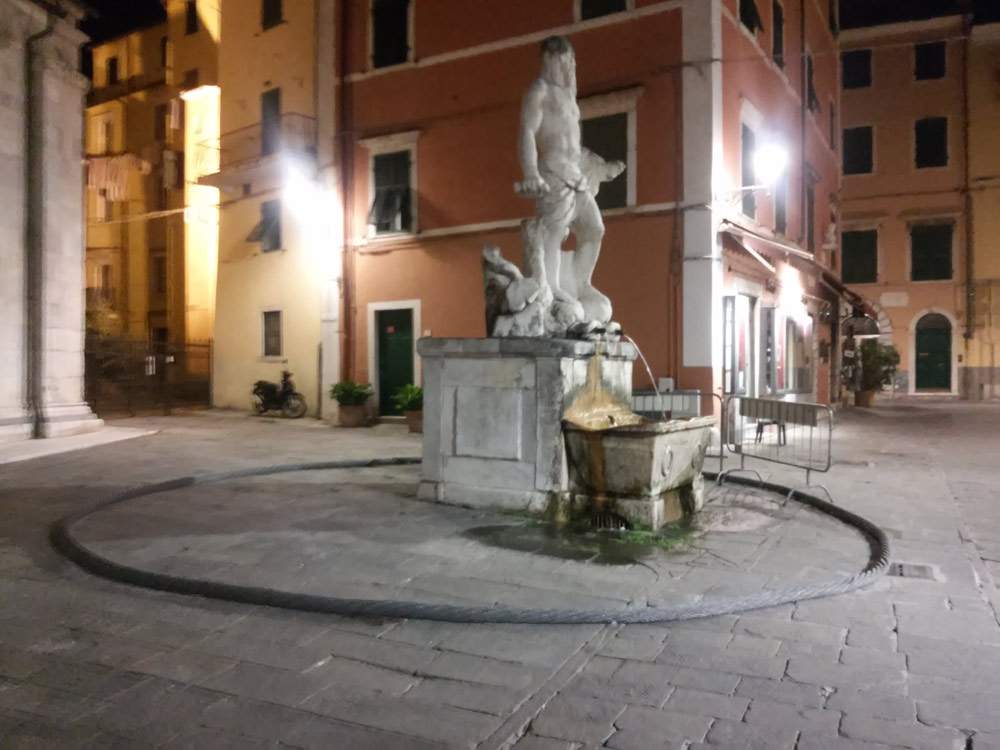 |
| Remo Salvadori, Continuo infinito presente (1997; steel, 700 x 9 cm; Carrara, Piazza del Duomo) |
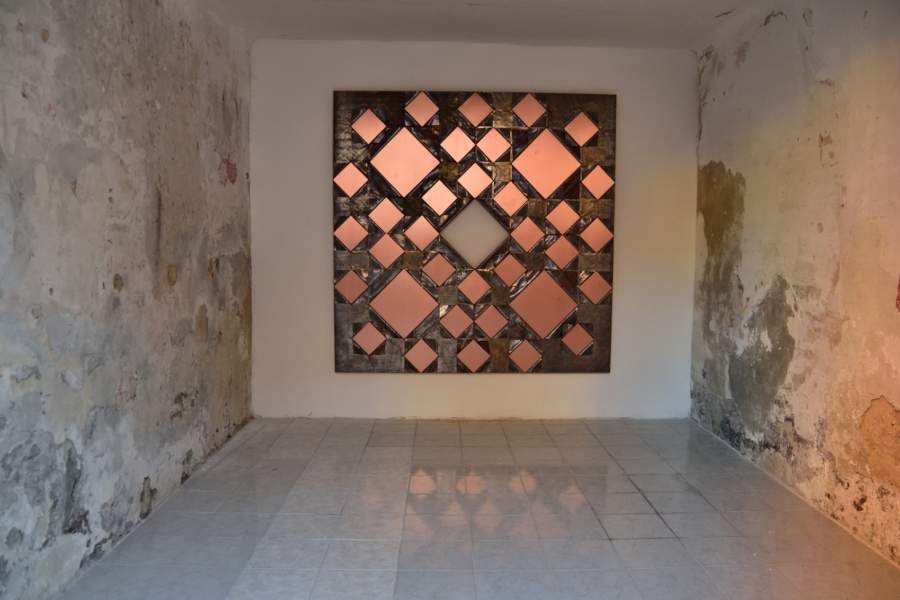 |
| Remo Salvadori, In the Moment. Photo from the blog andreapaoletti.com. |
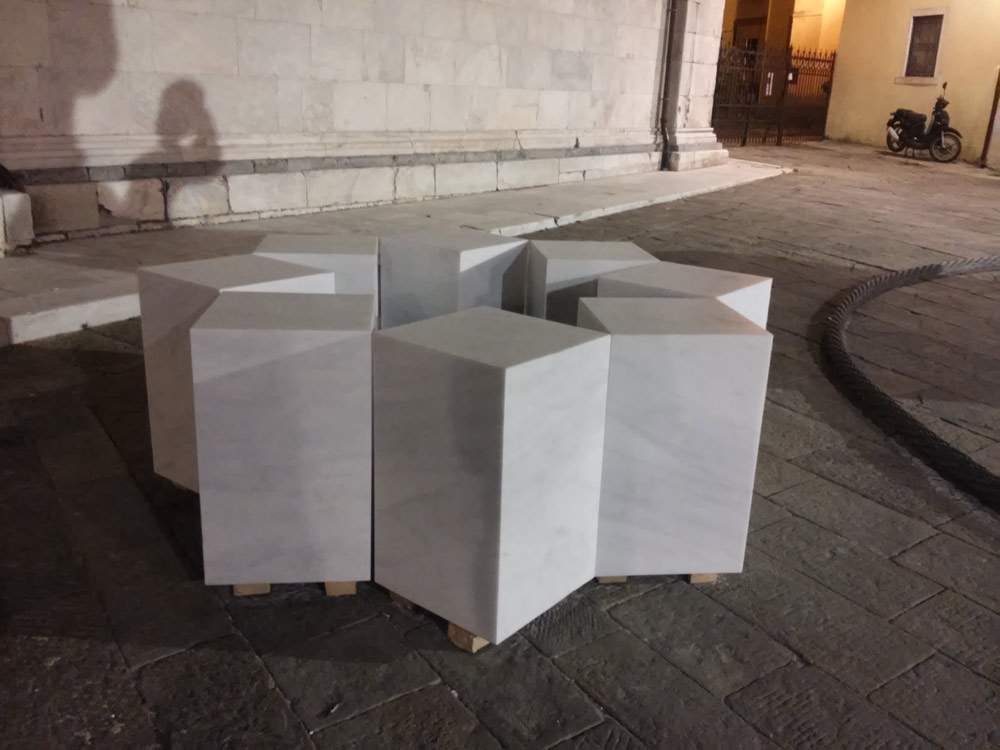 |
| Remo Salvadori, Non si volta chi a stella è fisso (2016; statuary marble, 215x215x72 cm; Carrara, Piazza del Duomo) |
In addition to the aforementioned problems (lack of a path or elements to create one’s own path among Salvadori’s works and, Threshold aside, labile connections to the context within which the works are exhibited), there is the lack of panels signaling the presence of the works: some visitors to the Church of Tears, not paying attention to the installation on the door of the building, wondered where Salvadori’s work was. It sounds ridiculous, but these are scenes I actually witnessed: I think it is indicative of the fact that Neither from nor to has relevant communication problems, even greater if we think, as mentioned, that Salvadori is a rather complicated artist, moving between Renaissance art, from which he takes the desire to refer to specific proportional canons that refer to the harmony inherent in things, and the contemporary experiences of artists such as Brancusi and Judd with whom the Tuscan sculptor would seem to share forms and even intentions.
It is a one-work exhibition instead The Time of Places by Maura Banfo. An enormous resin and zinc nest, typical of the Turin artist’s production, is placed in the center of the Octagonal Hall of the Liceo Artistico, with which she certainly establishes an excellent scenographic relationship. The artist explains his work as follows in the exhibition catalog: “The nest is the projection of the concept of home, the envelope that surrounds us, our baggage, our memory. The nest is a metaphor for the casal of relationship and care, where care means a ’taking care’ so as to ’reshape,’ to ’accompany form.’” Agreed: the nest has long been a symbol of protection and intimacy, The Time of Places offers a highly scenic and very captivating show for the audience, and certainly the operation is the easiest read of the entire Marble Weeks. In order to better justify Maura Banfo’s presence alongside artists such as Spoerri, Aquilanti, and Salvadori, did we not need something more substantial? While we try to answer the question, we can establish that in any case Maura Banfo’s exhibition can be a good approach towards contemporary art by those who are not very familiar with it, but even in this respect it could have been done better (with the presence of a popularizing facility, for example: but it is now understood that the little tendency towards popularization is a common problem with all Marble Weeks exhibitions).
However, an overall positive judgment on the four main exhibitions of Marble Weeks cannot be disregarded: an interesting path oncontemporary art has been set up, which we hope will continue with greater strength and fewer gaps next year.
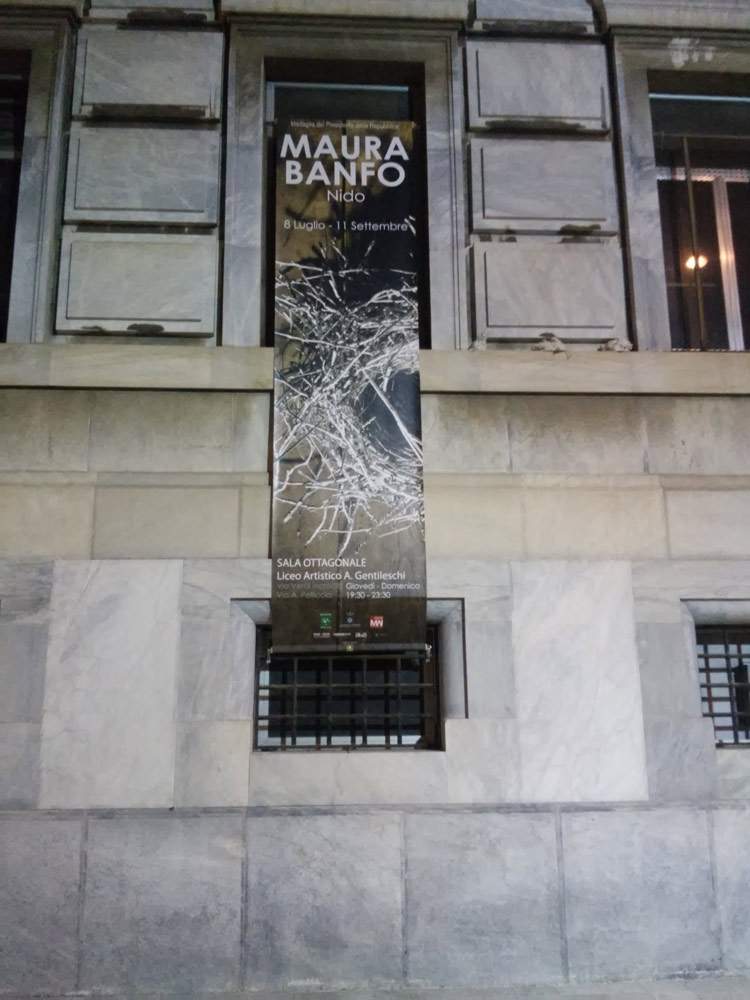 |
| Maura Banfo’s exhibition |
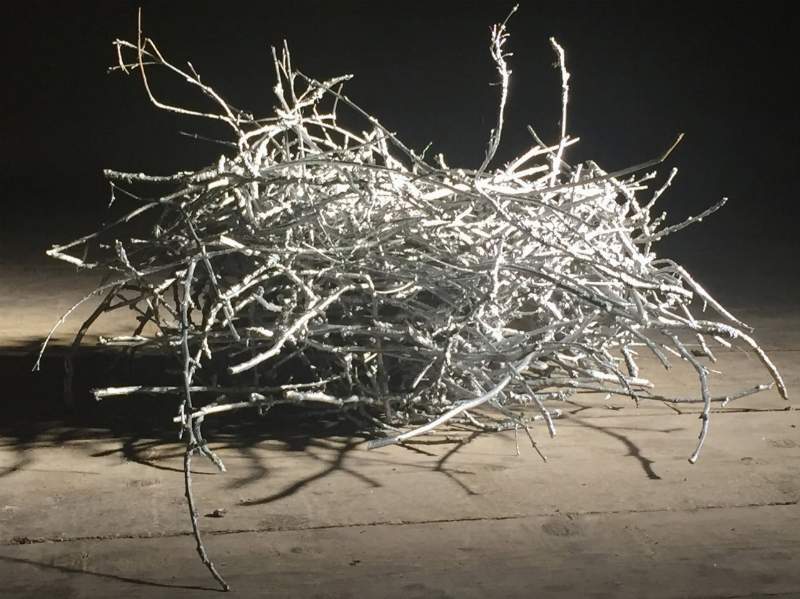 |
| Maura Banfo, The Time of Places (2016; resin and zinc, 320 cm diameter; Carrara, Liceo Gentileschi Octagonal Hall) |
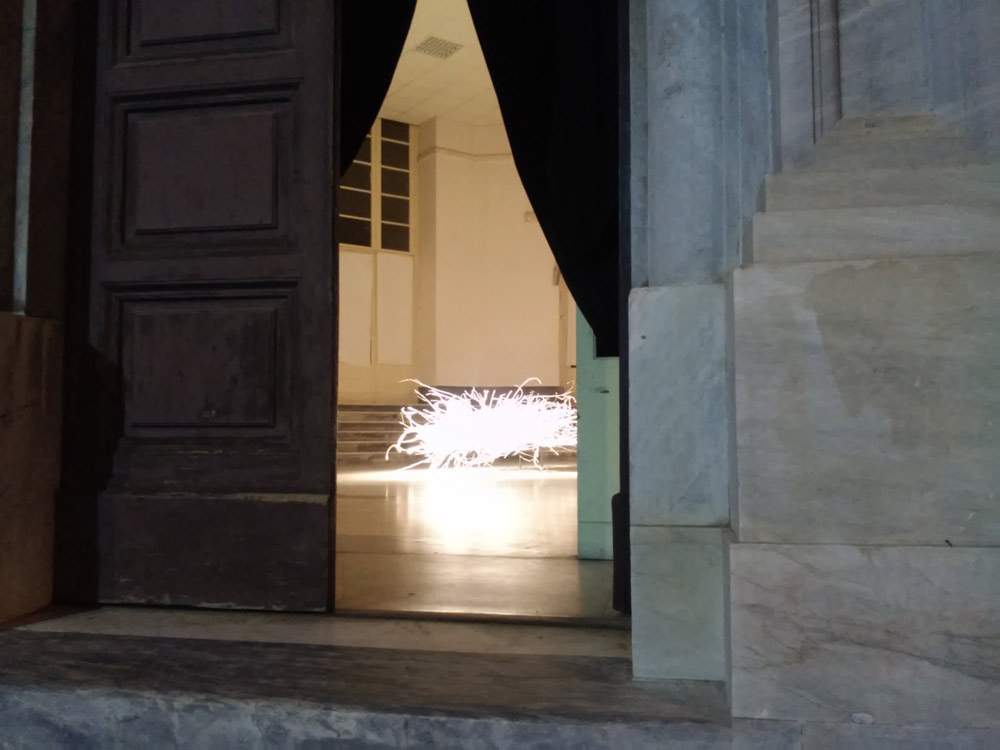 |
| Maura Banfo’s Nest in the Sala Ottagonale |
Warning: the translation into English of the original Italian article was created using automatic tools. We undertake to review all articles, but we do not guarantee the total absence of inaccuracies in the translation due to the program. You can find the original by clicking on the ITA button. If you find any mistake,please contact us.



























